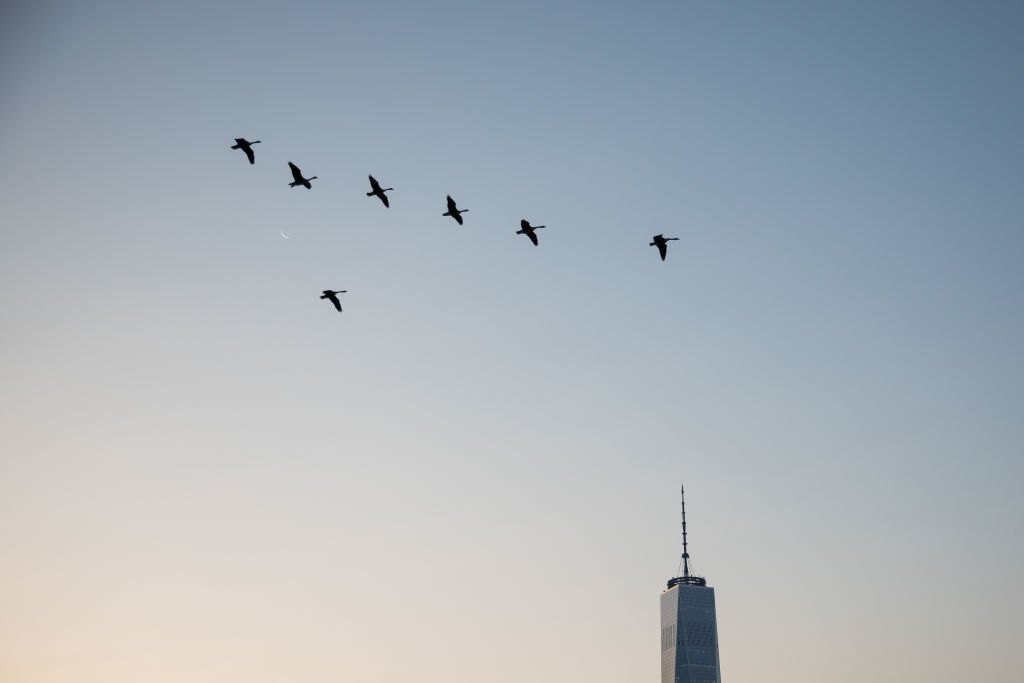
Sanderlings, red-headed woodpeckers and great gray owls are just a few of the North American bird species projected to be threatened by climate change in the coming decades, according to the latest assessment depicting an increasingly dire situation for the continent’s avian wildlife.
“Two thirds of birds in North America are at risk from climate change, to large range losses, potentially extinction, and this is especially so if we continue on the current trajectory,” says Brooke Bateman, senior climate scientist for the National Audubon Society, which carried out the report.
The October 10 report, titled “Survival by Degrees: 389 Bird Species on the Brink,” details the projected range losses for more than 600 bird species in North America under climate change scenarios of 1.5, 2 and 3 degrees Celsius of warming. Under the Paris Climate Agreement (which President Trump announced the U.S. would pull out of in 2017) nations around the world agreed to take measures to keep global temperature increases due to climate change under 2 degrees and to try to limit temperature rise to 1.5 C, though there are doubts that many nations will follow through on their commitments.
This newest report comes on the heels of a disturbing study last month, which showed that North America has lost 3 billion birds — nearly a third of its total avian population — over the past half century, findings that illustrated an “imminent disaster,” according to lead author Ken Rosenberg.
And Thursday’s report shows how much worse the situation may get in coming decades, with nearly 400 species of North American birds projected to be threatened by the worsening effects of climate change.
“Birds are the canaries in the coal mine,” says Mike Parr, president of the American Bird Conservancy. “It’s indicative of a broader biodiversity and wildlife issue. We need to pay attention to it now.”
Climate change isn’t the only factor reducing bird populations and squeezing many species toward extinction, but it’s making an ongoing problem worse. Birds facing habitat loss and other human impacts, like predation from domesticated cats and building collisions, are now being hit with added pressures as rising global temperatures push bird ranges northward, or erase them altogether.
There may still be hope in bird conservation, and in the broader climate crisis, but only if urgent, difficult actions are taken to address rising greenhouse gas emissions. For Bateman, successful policies that helped revive bird species like bald eagles provide some solace.
“Once we figured out that the pesticide DDT was affecting our raptor populations … we were able to do something,” says Bateman. “‘It gives us hope, because it shows us that if we do something, and if we know what to do, which we do with the climate change issue … we can make a huge difference.”
The threat posed to birds may also sound the alarm on biodiversity loss and climate change in terms that hit closer to home for average Americans than vaguer-seeming warnings of sea level rise and increasingly powerful storms. “When it comes to birds, I think there’s a greater connection for a lot of people,” says Parr.
And for many, those connections may run deeper than we realize.
“The bird that got me into birding was the common loon, and this was a bird that my grandmother taught me about when I was little and I used to visit her in northern Wisconsin,” says Bateman. “If climate change continues, I could go back to those locations where my grandparents lived, and the loons will no longer be calling there.”
More Must-Reads from TIME
- Cybersecurity Experts Are Sounding the Alarm on DOGE
- Meet the 2025 Women of the Year
- The Harsh Truth About Disability Inclusion
- Why Do More Young Adults Have Cancer?
- Colman Domingo Leads With Radical Love
- How to Get Better at Doing Things Alone
- Michelle Zauner Stares Down the Darkness
Contact us at letters@time.com